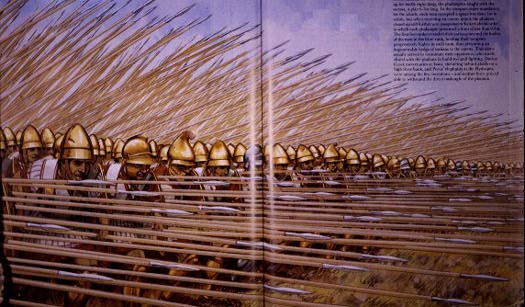Rooting, the Spear, and the Phalanx
/ I think this picture helps explain why people developed rooting techniques. From the time of Alexander the Great until Julius Caesar this type of warfare was totally dominant.
I think this picture helps explain why people developed rooting techniques. From the time of Alexander the Great until Julius Caesar this type of warfare was totally dominant.Cavalries, when they were very large and well organized could be decisive against spear armies but in most places, most of the time, they didn't have the numbers to beat the infantries. (Later the Mongols were a big exception.)
When Julius Caesar came along he consistently defeated this type of Phalanx formation
 with something called a Centurion. A Centurion was 100 men divided into 20 groups of 5 which were capable of acting as a unit.
with something called a Centurion. A Centurion was 100 men divided into 20 groups of 5 which were capable of acting as a unit.Each man carried:
- a 6 foot long javelin, which could be used for throwing or thrusting.
- a shield, which fit together with 4 other shields into a solid shape which angled up from the ground and could be used to get under the phalanx.
- a short sword.
American style football and the game of pool are both leftovers from the days of the Phalanx. Few armies have ever been as well organized as Julius Caesar's were, so the Phalanx continued to have play in the fields of battle until the gun.
Rooting techniques have some application in stand-up styles of wrestling, but their main application is being able to hold a long spear, shoulder to shoulder with other men, while you are facing a solid wall of on coming spears.
I believe one of the roots of push-hands came out of the idea of Champion Matches. These were fights held the night before a battle, where both sides put forward their greatest fighter. It was a chance for generals to meet, and sometimes find a settlement with out arms. Failing that, if your champion won the other army was demoralized.
